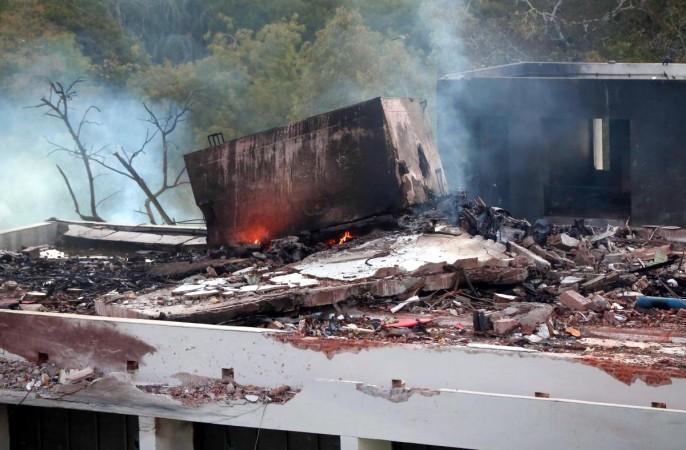
In a devastating incident that has reverberated across the aviation sector, Air India flight AI 171, a Boeing 787-8 Dreamliner, crashed shortly after takeoff from Ahmedabad on June 12, 2025. The crash resulted in the tragic loss of 260 lives. Preliminary findings from the Aircraft Accident Investigation Bureau (AAIB) have identified a mid-flight fuel cutoff as the cause of the engine failure that led to the crash. This revelation has sparked widespread concern and raised critical questions about the safety protocols for such aircraft.
Aviation expert Mark Martin, CEO of Martin Consulting, highlighted the improbability of pilot error during such critical phases of flight. He stated, "No pilot is stupid, or inept, to want to play around with switches in the middle section of the cockpit when all attention is focused on forward flight cockpit instruments located in front of the pilots, during takeoff and landing." Martin's insights underscore the need to explore other potential factors that may have contributed to the incident.
The AAIB's preliminary report reveals that both fuel control switches, responsible for supplying fuel to the engines, were turned off in quick succession, leading to the shutdown of both engines. The cockpit voice recorder captured a conversation between the pilots, where one pilot questioned the other about the fuel cutoff, to which the response was a denial of any such action. This exchange has deepened the mystery surrounding the crash, as it suggests that the pilots were unaware of the switches being moved.

Investigation and Global Implications
The investigation has further revealed that the aircraft was flying at 180 knots when the fuel cutoff switches were moved from the RUN to the CUTOFF position, just one second apart. This critical moment was followed by an attempt to restart the engines, but the crash occurred before the engines could be fully restarted. The report also noted that both pilots had adequate rest before the flight, ruling out fatigue as a potential factor.
The AAIB has not issued any immediate safety recommendations for Boeing 787-8 aircraft or GE GEnx-1B engines, but the incident has sparked a global discussion on aviation safety. Martin remarked, "The report will have a global ramification on all 787 operators," underscoring the potential impact of the findings on the aviation industry worldwide. The wreckage has been secured for further analysis, and the final report is expected within a year.
The investigation team is reviewing additional evidence and has sought input from various stakeholders to ensure a comprehensive understanding of the incident. The AAIB's report also mentioned that fuel samples taken from the bowsers and tanks used to refuel the aircraft were tested and found satisfactory, eliminating fuel quality as a cause. The crash has drawn attention to the design and operation of fuel control switches in the Boeing 787 cockpit.
Design and Safety Concerns
Aviation experts have pointed out that these switches are protected by brackets and fitted with a stop lock, making it unlikely for them to be moved accidentally. US aviation safety expert John Cox explained that the switches and the valves they control are powered and wired separately, ensuring that any action taken directly affects only the engine it is linked to. The incident has also brought to light a 2018 warning from the Federal Aviation Administration (FAA) regarding the risk associated with Boeing fuel switches.
Despite this warning, no immediate safety recommendations have been issued for the aircraft model involved in the crash. The AAIB's report has called for the investigation to be taken into a global quorum, involving international aviation safety regulators to ensure the safety of 787 aircraft operations worldwide. The crash of Air India flight AI 171 is the first fatal accident involving the Boeing 787-8 Dreamliner, a model that has been in service since 2011.
The aircraft was deemed airworthy, with its Airworthiness Review Certificate valid until May 2026, and both engines had been recently installed. The incident has raised questions about the reliability of the aircraft's systems and the effectiveness of existing safety protocols. In response to the crash, Air India and Boeing have assured full cooperation with the ongoing investigation. Indian authorities have also ordered deeper checks of Air India's entire fleet of Boeing 787 Dreamliners to prevent future incidents.
Historical Context and Future Implications
Air India operates 33 Dreamliners in its fleet, and the crash has prompted a reevaluation of safety measures across the airline's operations. The crash has also sparked a debate about the role of human error versus technical failure in aviation accidents. The pilots' union has expressed concern over the direction of the investigation, alleging that it presumes the guilt of the pilots. The union has called for transparency and the inclusion of suitably qualified personnel in the investigation process.
Historically, aviation accidents have often led to significant changes in safety regulations and procedures. The Tenerife airport disaster in 1977, which remains the deadliest aviation accident in history, resulted in the implementation of standardized communication protocols among pilots and air traffic controllers. Similarly, the crash of Air France Flight 447 in 2009 led to changes in pilot training and the design of cockpit instruments.
The Air India crash has the potential to drive similar changes in the aviation industry, particularly concerning the design and operation of fuel control systems in modern aircraft. As the investigation continues, the focus will be on identifying the root cause of the incident and implementing measures to prevent a recurrence. The findings of the AAIB's preliminary report have raised important questions about the design and operation of critical systems in the Boeing 787, and the investigation's outcome will likely have far-reaching implications for the aviation industry.
In conclusion, the crash of Air India flight AI 171 has highlighted the complexities and challenges of ensuring aviation safety in an era of advanced technology and sophisticated aircraft systems. The priority remains on understanding the cause of the crash and ensuring the safety of future flights. The world awaits the final report, which will provide a comprehensive understanding of the incident and guide future safety measures.














